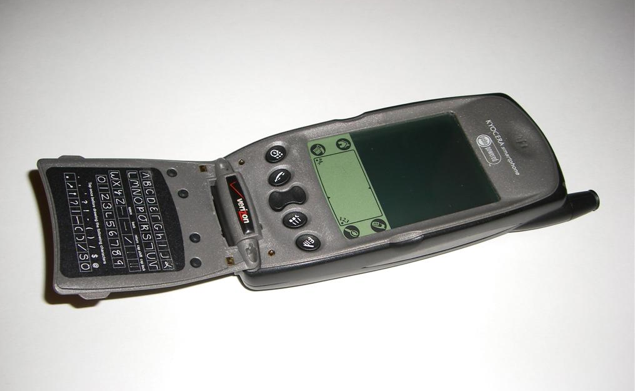My Premise
"I've lived a crazy life."
At least that's what people tell me. From my perspective however, I've simply rolled with the punches while looking for ways to make lemonade along the way. Having this perspective led me on an unbelievable journey, where life experiences with seemingly random connections formed a pathway directly to one of democracy's most impressive achievements… the multi-device accessible Internet.
You see, I was never into computers as a kid. In fact, I didn't even own a computer until I was 16... and truth be told, I didn't really use that chunky Compaq laptop for anything other than Solitaire, Minesweeper, Final Fantasy VII, and AOL flash sessions.
Yes, you read that correctly, flash sessions!
Luge, Verizon & Smartphones
During that period of my life, I was an athlete on the US Luge Team. We (the US National Luge Team) traveled around the world hurling ourselves down a different iced track every week. Back then 56k modems were high tech, so to stay in touch with anyone at home, we would send/receive emails in a flash session. Browsing the Internet wasn't an option, because every minute we spent online was priced based on International phone call rates. Ouch!
Due to pure habit, I hadn't really used the Internet as a tool or resource until graduating from High School. About five years after that though, the possibilities of the Internet came rushing into my life when the very first smartphone was offered in the US. It was the Palm OS powered Kyocera 6035 smartphone offered by Verizon in 2001.

I needed a smartphone to have my contacts on hand, and to have driving directions handy whenever I got lost on my way to speaking engagements... which was often! Verizon was the main sponsor of the US Luge Team program for most of my luge career. During my time as an athlete, I watched NYNEX (A New York / New England Telecom company) merge into Bell Atlantic, and then merge again into Verizon. I was even a guest speaker for a room full of Telecom Executives in NYC when Verizon first launched their Verizon Wireless brand. Getting a smartphone was something that made sense for me, even though it was a bit pricey for an athlete.
Little did I know just how much that little device would influence my life.
A Portable Problem
Smartphones have changed a lot from that not-so-humble starting point. They got smaller, added color screens, BlackBerry's came out, Sidekicks happened, etc. However, all of these options were only able to browse the Internet in limited ways due to the mobile browsers of the times. I remember wishing for the ability to access the web from anywhere way back in 2001. I technically could do so, but in reality actually using a smartphone to access the Internet way back then pretty much... sucked.
That all changed, when the iPhone was released in 2007. This device had the muscle and speed to handle Internet pages and graphics in style. Shortly after that, responsive website design emerged thanks to CSS3's media queries. Soon after, responsive websites (which worked on any device) were considered a cheaper alternative when compared to the costs of making/maintaining separate projects for Internet sites and smartphone apps.
Meanwhile in my mind, what I had originally wanted back in 2001 was finally possible!
A Whole New World
All of these happenings drew me directly into the rabbit hole of web design and development. Except in my case, everything on the web should obviously work well on mobile devices! I had been working as a visual/product designer since retiring from sports, but I quickly shifted my focus to HTML, CSS, and eventually JavaScript to ensure whatever I personally added to the world wide web would work on mobile, too. I started working as a designer/developer hybrid about 6 months later.
Eventually in 2011, what's now known as the Bootstrap Framework was shared (open source) by some Twitter developers. Then in 2012, they released Bootstrap 2 with a 960-based 12 column grid, icons, and more complex components. Having experimented with different responsive boilerplates for years, I found the Bootstrap 2 implementation to be super reliable, and it provided all of the pieces necessary to build robust interfaces.
Finally, after 11 years of dreaming, designing, learning to code and pulling my proverbial hair out... I could build websites that worked on every device. More importantly to me though, I could build sites with interactions and aesthetics that also worked well on every device. Considering I'm still to this day ensuring the power of the Internet is accessible from any device, the journey was well worth the growing pains.
A Vision Matured
In the end, I've never viewed the web as a desktop medium. I simply missed living through that part of Internet history due to a career that brought me exclusively to secluded mountain towns across the globe. Without my background in sports though, I would have never formed an opinion about multi-device accessibility. Plus sports gave me the fortitude to stick with this coding stuff, by setting goals of fluency and mastery from the beginning.
Today, I meet and work aside a younger generation that takes mobile Internet access for granted. Nevertheless, I'm at peace knowing that in my own small way, I actually helped to make all of our Internet lives more accessible and performant than mine was back in the day.
It's an Internet circle of life thing, that I'm honored to be a part of!
U P D A T E D